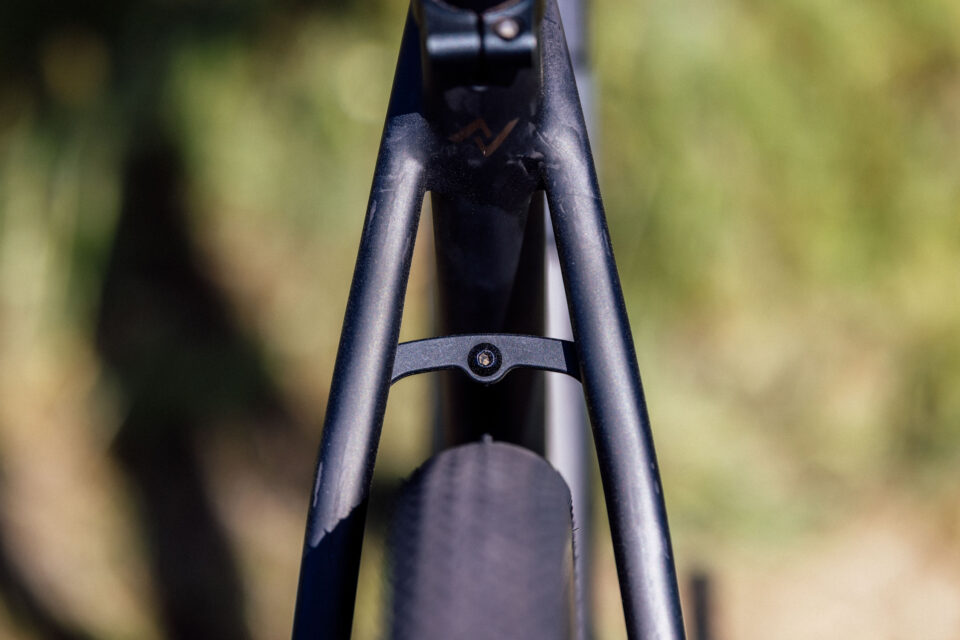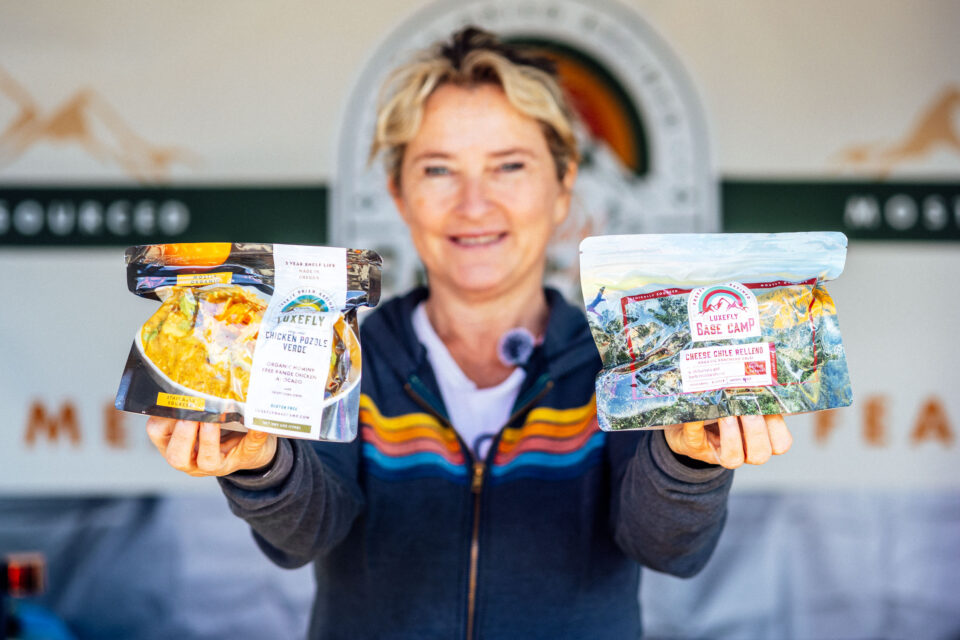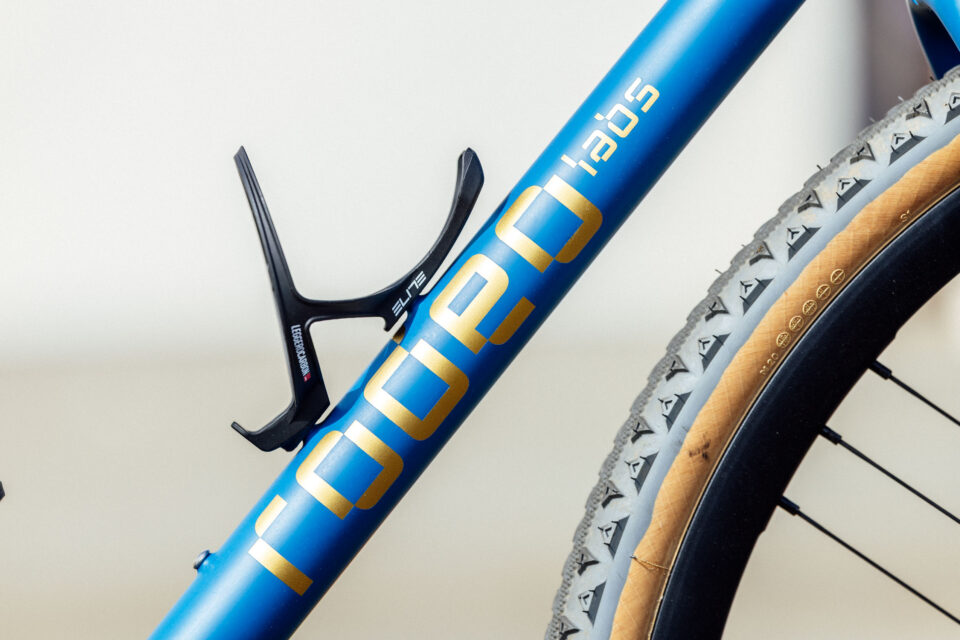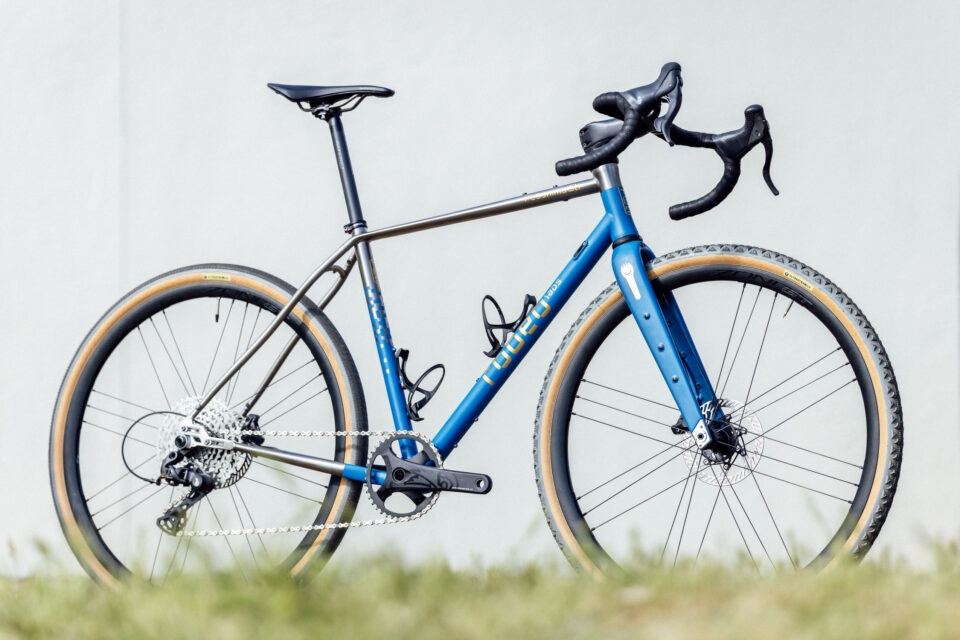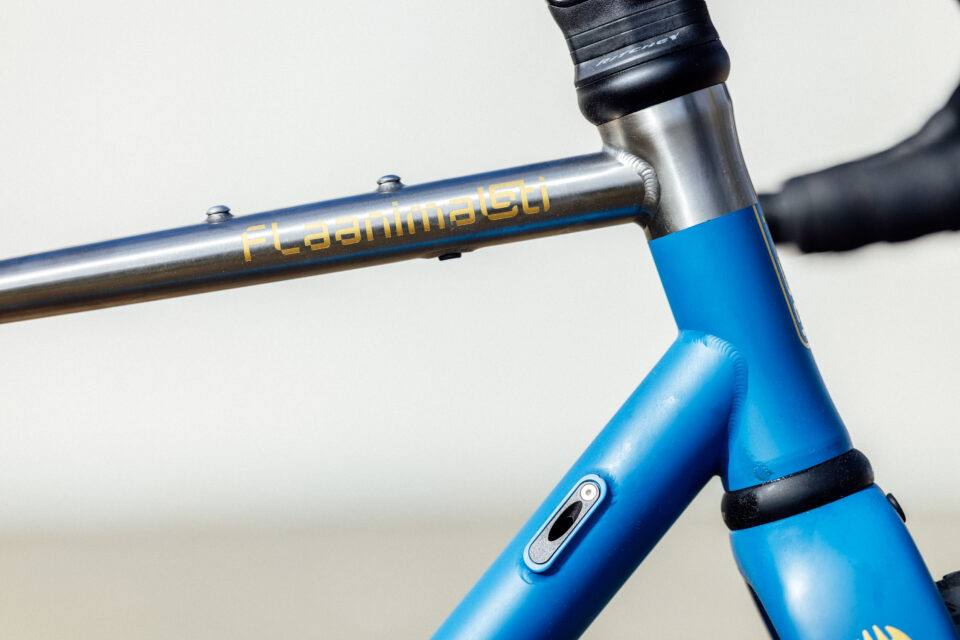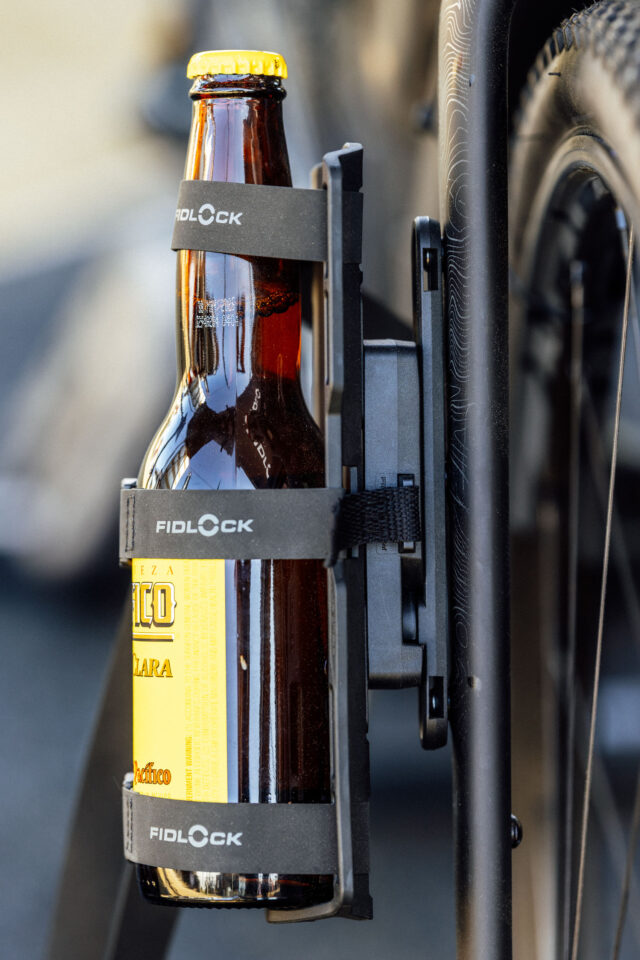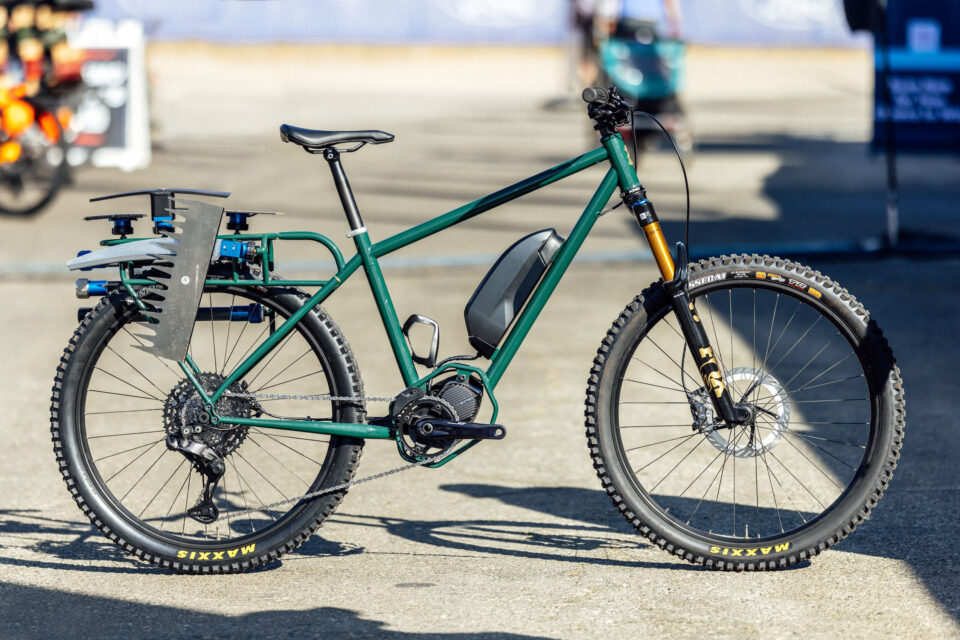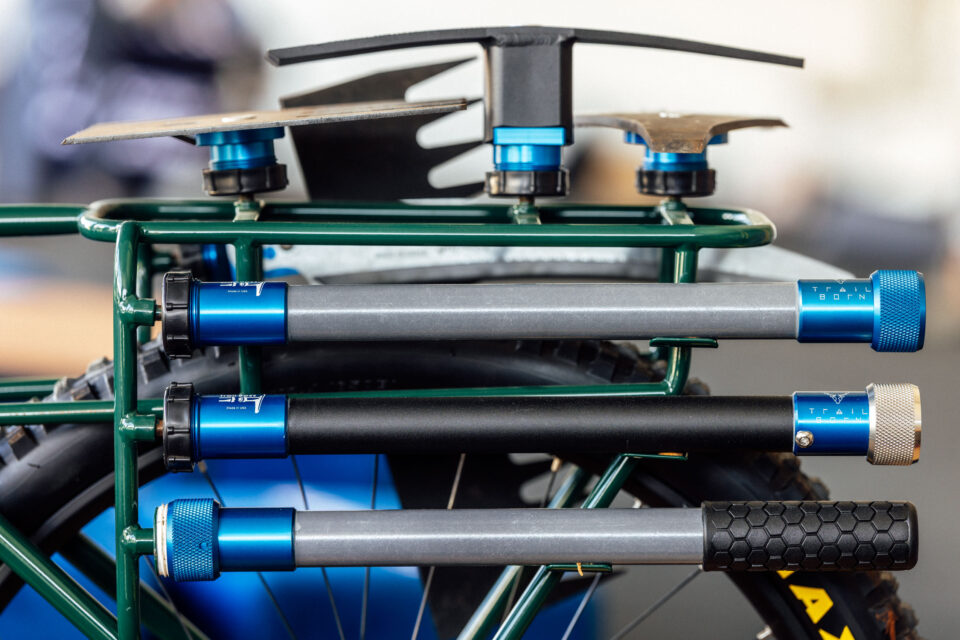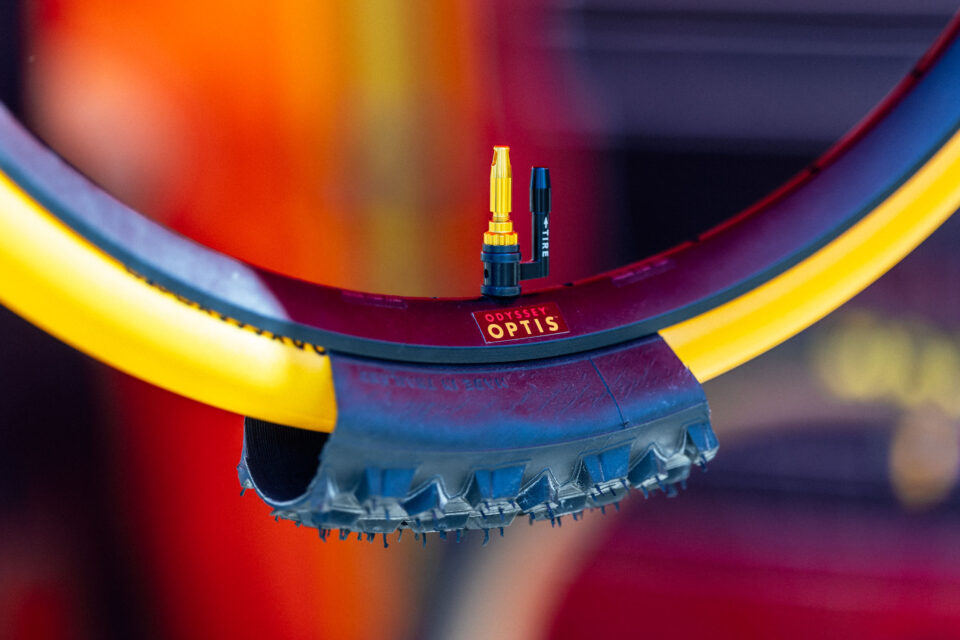In the third installment of our 2025 Sea Otter Classic coverage, we rounded up 14 more interesting finds, including an impressive Rodeo Labs Flaanimal build, the all-new Norco Search, a wild gear box by Praxis, the best backcountry meals we’ve tried, Low-fi Steve, the smallest shock pump possible, a bunch of electronic mini-pumps, and much more…

Considering the epic 18-hour days required to cover shows like Sea Otter, it’s amazing how fast each one goes by. One minute, I’m having a coffee and getting ready to shoot a bike in foggy morning light, and the next minute, people are closing up their tents, and it’s time to start writing. The three-and-a-half-day festival flies by. As I’m typing this, I’m kind of surprised that I’m on my way out of town with Sea Otter in the rearview as I put the final touches on photos. This isn’t the last roundup; there will be a couple more coming this week, but I can’t help but reflect on time as I compile this third roundup of noteworthy things I stumbled on throughout. Enjoy!
Norco Search
It’s not often that we get excited about a carbon gravel bike, but what Norco has on tap is pretty cool. It’s been 10 years since the Canadian brand launched the original Search gravel bike. They’ve had a couple of iterations over the decade since, although I’m not entirely sure how many. We reviewed the 2018 model. In the next day or two, they’re unveiling the latest version with seven models for all types of riders and budgets. We got to preview the high-end carbon version at Sea Otter, and we spoke to Norco’s brand manager to get some details about what’s coming. Here’s what we know.
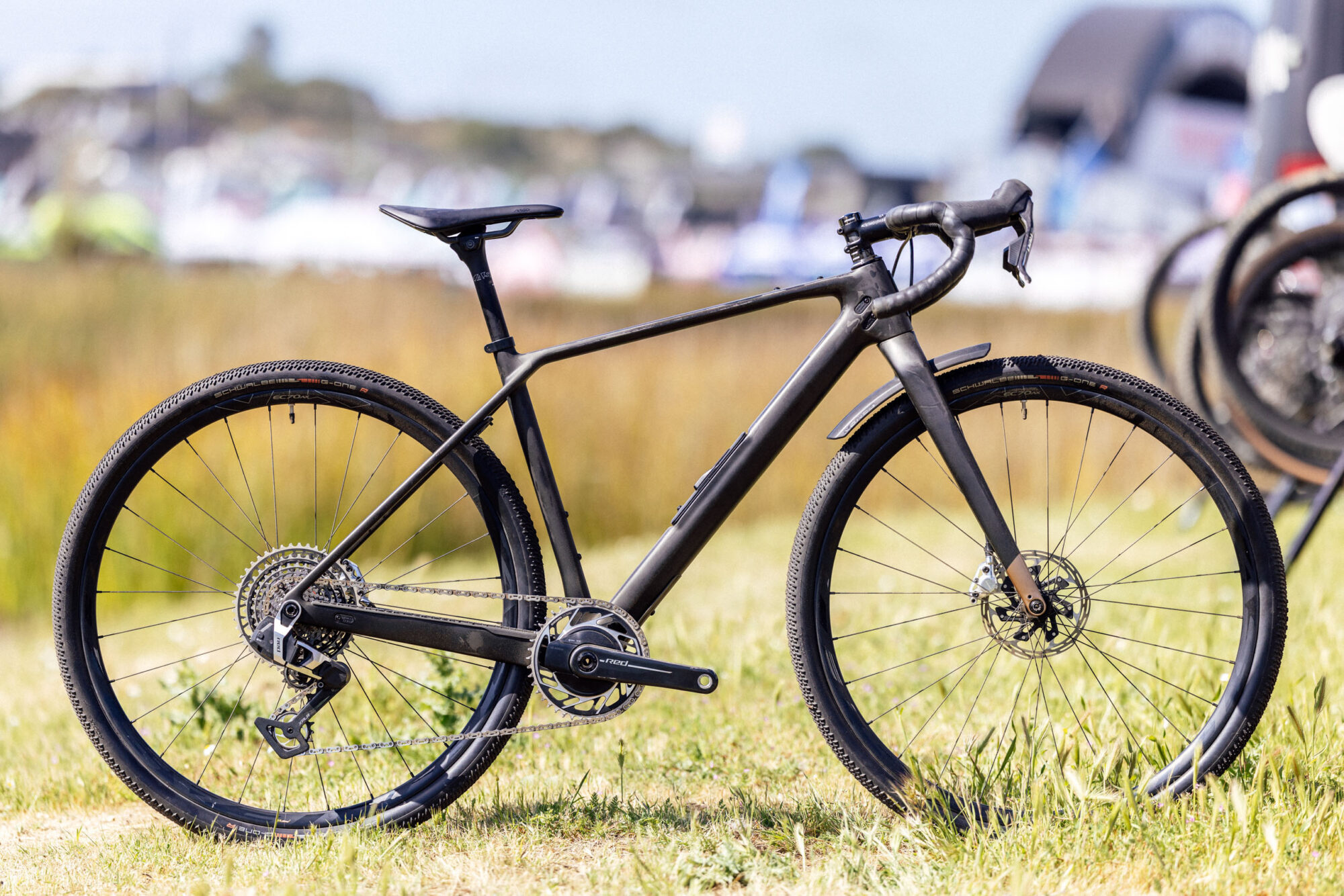
The most interesting thing is that there will be many options. That includes the high-end model shown here, but there will also be an aluminum model—better yet, an aluminum model that starts at $999 with hydro brakes, a 1×11 drivetrain, and flat bar options. There are also 2x builds starting at $1,499. The carbon Search will start at $2,999, and the next level is an Apex build, which might be the killer spec for $3,399.
Other details include an estimated 50mm tire clearance, suspension-corrected geo, nicely implemented in-frame storage, and a really cool integrated front fender, which is removable. They also added a sharp fender bridge on the seat stay junction. The aluminum version will have rack mounts and three-pack mounts on the fork. We’re excited to learn more details soon. You can also watch Neil’s interview talking about the bike in the video here.
Electronic Mini Pumps
Trends always reveal themselves at the Sea Otter expo and other such events. It seemed like everyone was unveiling an electronic mini tire pump. There was even one more we saw that’s not shown since it’s still under embargo. Admittedly, I racked my brain trying to come up with a why for these odd little contraptions. One obvious marketing pitch is that they allow people to ditch CO2, but I’ve never carried CO2, so that does nothing for me. It could come in handy for car-based trips or even bikepacking trips if you’re completely opposed to carrying an actual pump. Otherwise, I suppose I’d need to try one to see what all the hype is about. Leave a note in the Conversation if you have any thoughts. All that said, here are three that were released over the last few days.
The Topeak E-Booster features Topeak’s HeadSmartHead that fits both Presta and Schrader valves and delivers up to 120 psi (8 bar) with an impressive ±2 psi accuracy. Constructed from a mix of aluminum and engineering-grade polymer, it’s built to withstand regular use in the workshop or on the go. The integrated digital gauge offers clear pressure readings, while the built-in 7.4V, 600mAh rechargeable battery charges via USB-C in approximately 45 minutes. Weighing 162 grams and measuring only 5.9 x 3.5 x 8.6 cm, the E-Booster Digital is pretty lightweight and portable. It sells for $120; learn more at Topeak.

We didn’t actually see Muc-off’s AirMach Electric Mini Inflator as it was stolen from their booth. However, we saw a photo and a box and learned a little bit about it. The AirMach is made from aircraft-grade aluminum, weighs just 97 grams (114 grams with its case), measures 6.4 x 5.6 x 2.8cm, and has a max pressure of 100 psi. Compatible with Big Bore, Presta, and Schrader valves, it’s designed for a variety of tire setups. The built-in 300mAh lithium-ion battery delivers enough power to inflate up to two tires on a single charge and fully recharges in 25 minutes via USB-C. The Muc-off AitMach Electric Mini Inflator sells for $99, and you can find more details at Muc-Off.
The Prestaflator GO features a high-speed brushless motor and is the most powerful of the three, with a 750mAh lithium polymer battery. Presta Cycle claims it can top off a 700 x 40mm gravel tire to 35 psi in just 45 seconds or 29 x 2.4″ MTB tires to 22 psi in 77 seconds. A precision digital auto-stop gauge ensures exact pressure accuracy (4–120 psi / 0.3–8.2 bar), while top-of-the-wheel mounting keeps sealant from contaminating the pump. Housed in an aluminum casing, it’s built to resist heat and wear. The USB-C fast charge feature fully recharges the unit in just over an hour, and the hands-free Prestacycle Presta head allows for completely unattended inflation. The Prestaflator GO sells for $129. More at Presta Cycle.
Robert Axle Tire Plugger
Our friends at Old Man Mountain and Robert Axle Project came to Sea Otter with a new toy. It seems like folks have offered solutions for storing a tire plugger and plug in the handlebars, pumps, and other discreet places, but I believe the new Axle Plug from the Robert Axle Project is the first in-axle plugger I’ve seen.

Designed to fit all 15mm Robert Axle Project and Chris King axles (M15 and M14), this compact tool is machined from lightweight 6061 aluminum and weighs just 8 grams with a bacon strip preloaded. It comes with five tubeless repair strips and is designed for quick access, making it easy to plug punctures on the fly. Made in Oregon, the Axle Plug offers another clever and convenient solution for stashing tools. The Axle Plug sells for $34, or you can get it and an axle for $76. More at Robert Axle Project.
Tenet Coven Rims
Tenet is a relatively small two-person company best known for its pedals and stems. Their new Coven Rims mark the brand’s bold entry into the world of mountain bike wheels, with a focus on performance and innovation. Tenet designed the Coven rims from the ground up to outperform the competition. Constructed from 6069-T6 aluminum, a material that’s 40 percent stronger than the commonly used 6061-T6, the rims feature welded seams for a stronger and more reliable joint, creating a better, more airtight tubeless setup. These rims have a 30mm internal width and come only in 32-spoke configurations in both 29″ and 27.5″ sizes. They weigh 606 and 574 grams, respectively.
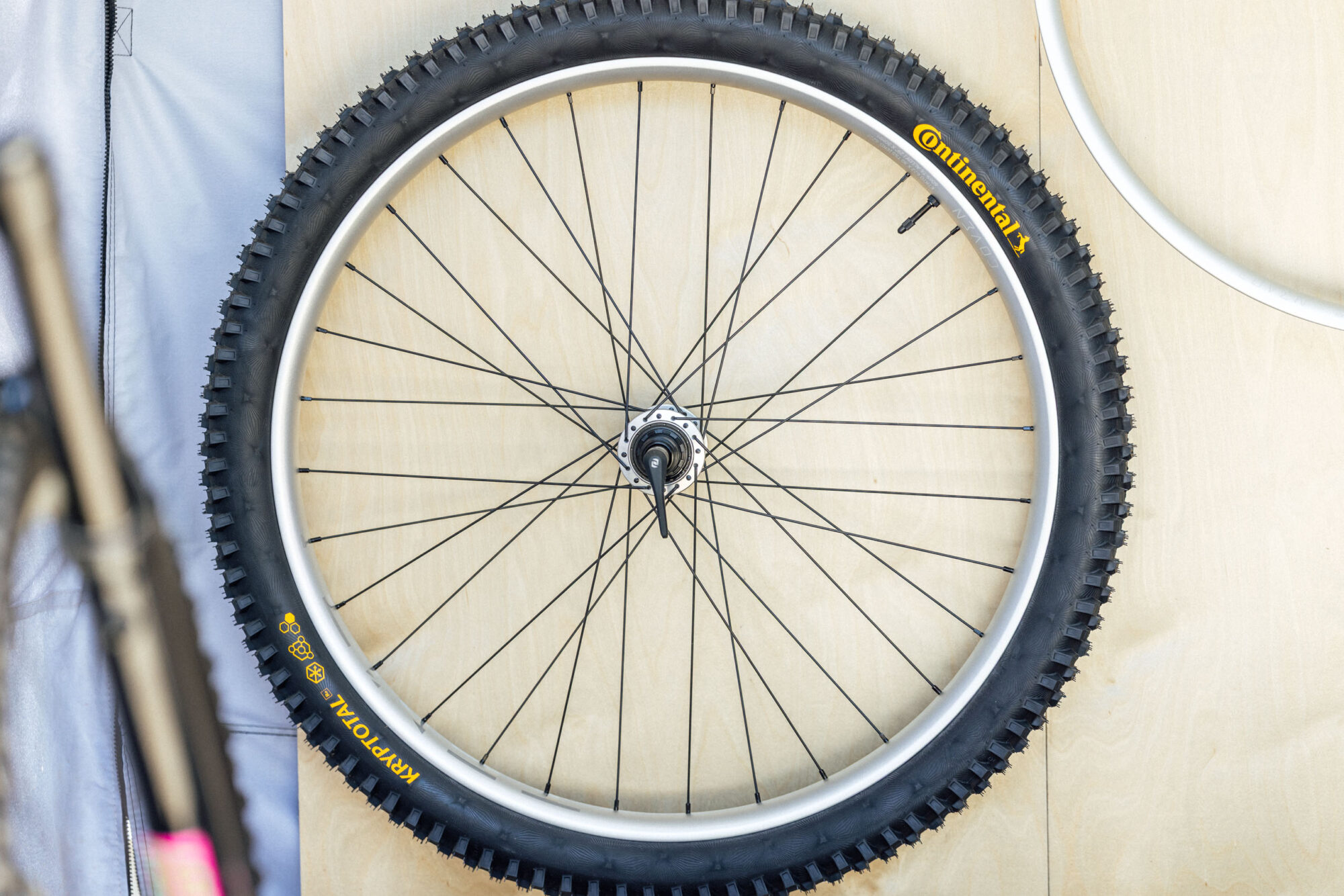
The Coven rims feature a custom extrusion with a hookless bead and a 4mm offset in their asymmetric rim profile, optimizing wheel strength and longevity. Of course, the offset design helps equalize spoke tension, allowing the wheel to stay true longer and handle impacts more effectively than symmetric rims. According to Tenet, the shallow profile of the rim adds vertical compliance, improving comfort while minimizing pinch flats and rim damage thanks to the wide hookless sidewall. Tenet also offers a premium, customizable finish, allowing riders to match the rim logos to their frame’s paint color.
Built to last, the Tenet Coven comes with a lifetime warranty for $109 USD, or you can get a wheelset with Industry Nine 1/1 hubs for $699. More details at Tenet.
Low-fi Steve and His Drawing Platform
My favorite thing about gatherings like the Sea Otter Classic is reconnecting with an extended family of like-minded friends. My second favorite thing is meeting new people who share the same passions in this oddball corner of the world. I didn’t get to make it on the Chris McNally/Ornot/Hudski drawing ride this year, but I connected with the group after they finished. Steven Streisguth had tagged along, and Chris told me I needed to check out his drawing setup.
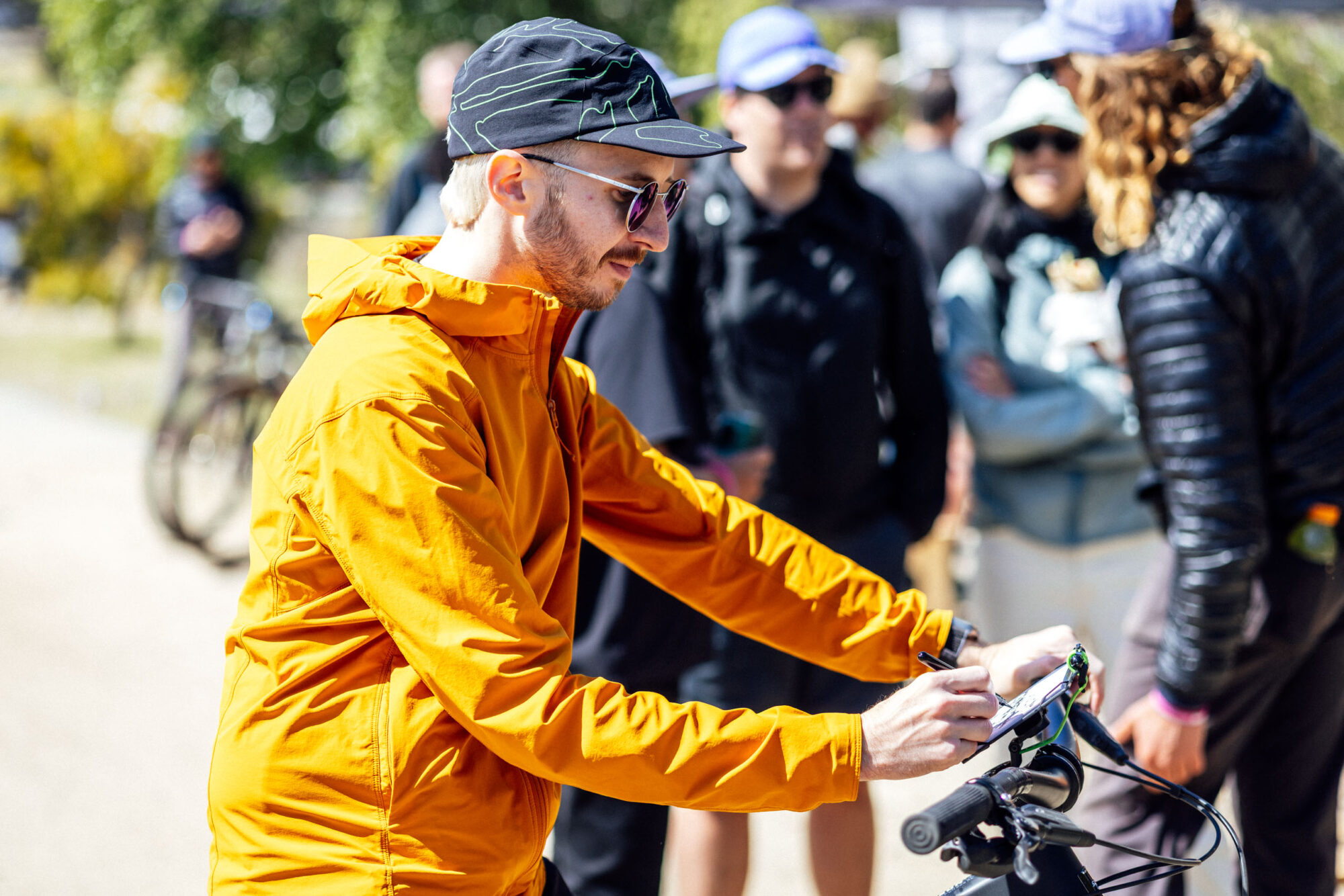
While maybe not for everyone who wants to try their hand at bike-drawing—some folks might prefer to sit down and meditate in nature as they illustrate their surroundings—it seems like Steven found a fun solution that fits his on style. He made this unique easel that mounts to the stem and allows him to put pen to paper without even dismounting. Or, thinking about it from a more utilitarian standpoint, it offers a sturdy, angled backing where you could even steady your arm on the handlebars. For his style, which I’ve heard is relatively fast pen and ink drawings that result in brilliant depictions of landscapes and other scenes, it certainly makes sense. Even more fun, he showed me a video of railing down some singletrack with that thing after completing a drawing!
We were trying to come up with a clever name for this interesting product, but nothing stuck. If anyone has any ideas, leave a note in the Conversation below. Also, you can follow Steve on Instagram here.
Topeak Nano Shock
If you’ve ever carried a shock pump on a bikepacking trip—I certainly have—you’ll know that it’s not ideal. There are a couple of pumps, such as the Topeak Mountain Digital 2stage, that work for both the tires and suspension, but it’s not light. However, weighing just 56 grams and measuring only 13.5 centimeters long, the Topeak Nano Shock is pretty impressive. It’s compact enough to stash away in a tool roll or forgotten frame bag corner, making it ideal for a backup on a longer trip like the Baja Divide or Colorado Trail.

Made from aluminum, the Nano Shock features a 360° rotatable flexible hose and Topeak’s Pressure-Rite shock valve for precise inflation and easy access in tight spaces. With a maximum pressure of 300 psi (20 bar) and a 4.7cc volume per stroke, it looks like a great emergency shock pump for bikepacking. Oddly, even after shooting and filming it, Neil and I were so impressed by its size that we failed to notice that it doesn’t have a gauge. However, considering suspension is usually adjusted based on sag, that’s perfectly fine. The Topeak Nano Shock sells for $45. Learn more at Topeak.
Luxefly
Sara Willis has a long history with food. For starters, she grew up on an organic vegetable farm. Since then, she’s owned and operated eight restaurants in Mexico and the United States. More recently, Sara rediscovered her love of the outdoors through backpacking, and like many of us, wasn’t satisfied by the current crop of backcountry meal options on the market. They messed with her stomach, and she didn’t like the fillers and ingredients in many of them. As a result, she started creating her own.

We were highly recommended to go check out Sara’s display, and I’m very glad we did. We sampled the Barbacoa Taco and Veggie Enchilada Taco Bowl. Wow. I have to say that these are some of the best backpacking meals I’ve tried. The Barbacoa Taco is incredible and the Veggie Enchilada has a brilliant, rich guajillo chili flavor. Both are perfectly seasoned and have whole pieces of ingredients. They seemed like real meals, and they’re not too salty like other backpacker dinners. I’m also excited to try the Biscuits and Gravy, which seems to be a favorite. All Luxefly Basecamp meals are made by Sara and another woman in Oregon and priced from $12.50 to $20. Learn more at Luxefly Basecamp.
Lake Cycling Sandals
Apparently, Lake’s sandals are a cult-level shoe for a lot of people. The brand recently brought them back with a modern take on a classic Lake design after pulling them from their range in past years. The latest Lake LXSDL is built on Lake’s Comfort Plus last and made to be versatile for comfort and adventure. Lake says that the LXSDL provides a wider foot space and features a durable microfiber and webbing upper, reinforced heel for added stability, and a real rubber sole that’s SPD compatible.
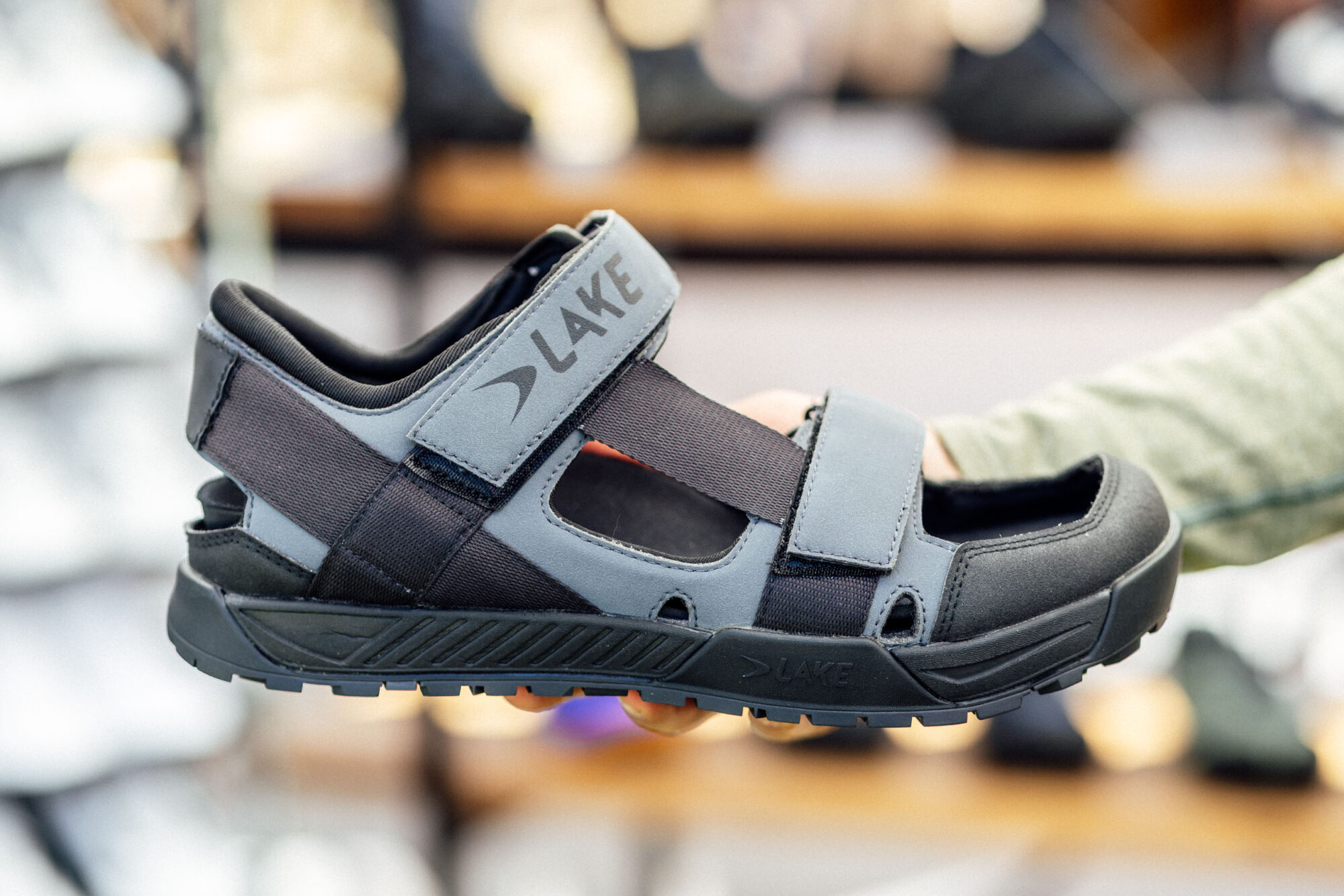
The LXSDL is available in sizes 39.5 to 47 and is priced at $199. You can find more details over at Lake Cycling.
Rodeo/Campagnolo Flaanimal 6 Ti
With all the gravel and mountain bikes I’ve shot over the years, I’m a little surprised that I hadn’t yet pointed my lens at one from Rodeo Labs. That said, I’ve always admired the artistic sensibilities of owner/founder Stephen Fitzgerald and how he photographs their eclectically painted creations, be they Flaanmals or Trail Donkeys. When I spotted this Flaanimal 6 Ti at the Campagnolo tent, I knew I had to add one to my own repertoire. As it happens, I sent Stephen a message the night after I photographed this bike to ask him about it, and I was sad to find out that he was at the show that day, and I missed him.
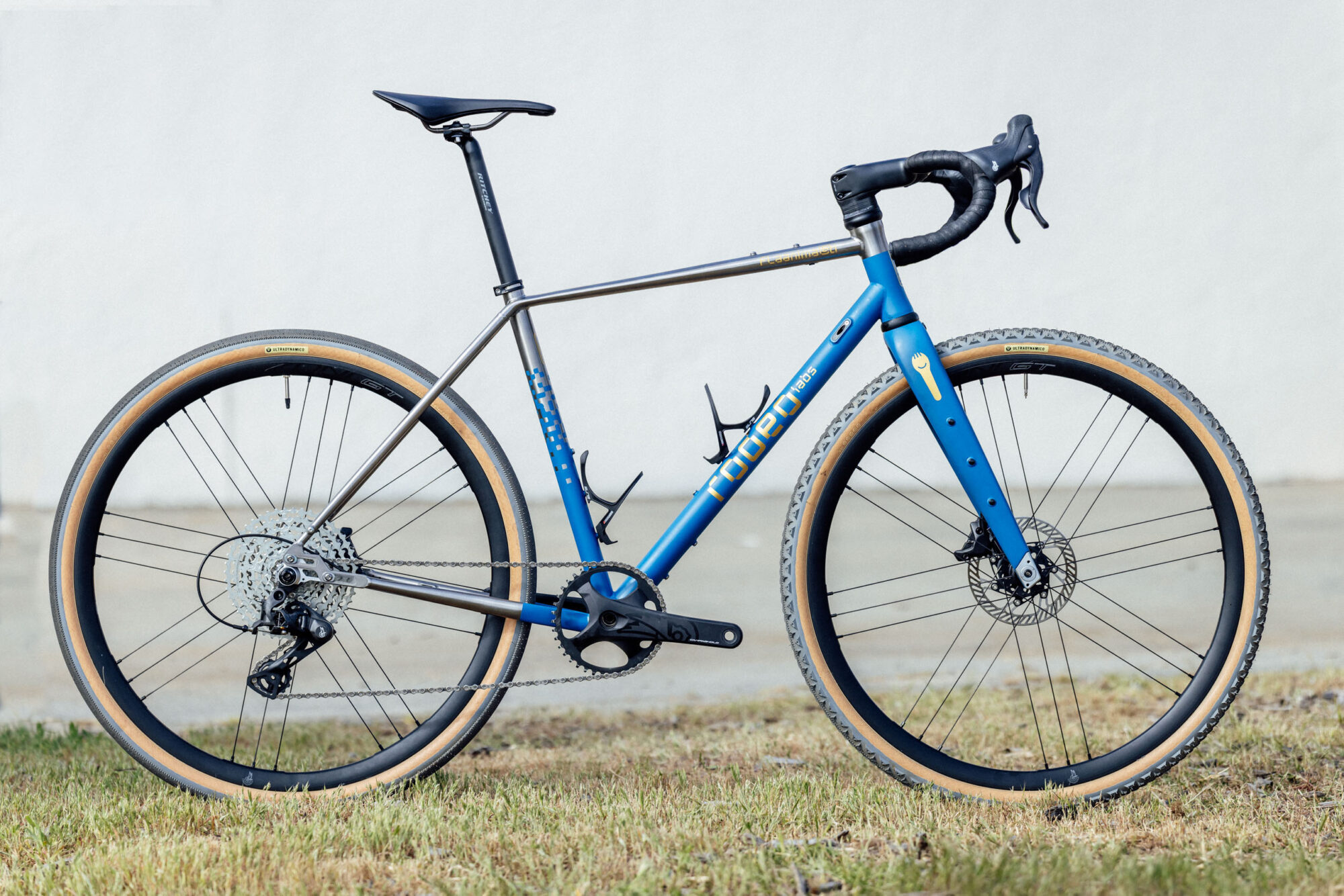
Rodeo sent this frameset to Campagnolo last week, especially for Sea Otter. They gave it a one-off blue and gold Cerakote finish, and Campagnolo completed the build with an Ekar GT and a Zonda GT wheelset. The cockpit is made up of Ritchey WCS and a Butano Ridge integrated handlebar and stem. Tires are Ultradynamico.
According to Stephen, this build perfectly shows off the traditional gravel end of the functional spectrum of the Flaanimal 6 frameset, and he happened to bring a different Flaanimal 6 Ti, which was set up on the fully rowdy end of the use spectrum. Drat!
Praxis Gear Box
I’m sure that the most repeated question at Sea Otter is, “What’s the most interesting thing you’ve seen so far?” Everyone usually pauses and then comes up with something. For me, the answer this year was all the small builder bikes scattered throughout the show. I was also impressed with Shimano’s Trail Born effort, which I’ll touch on later. However, the Praxis HiT Transmission came up quite a bit, too.
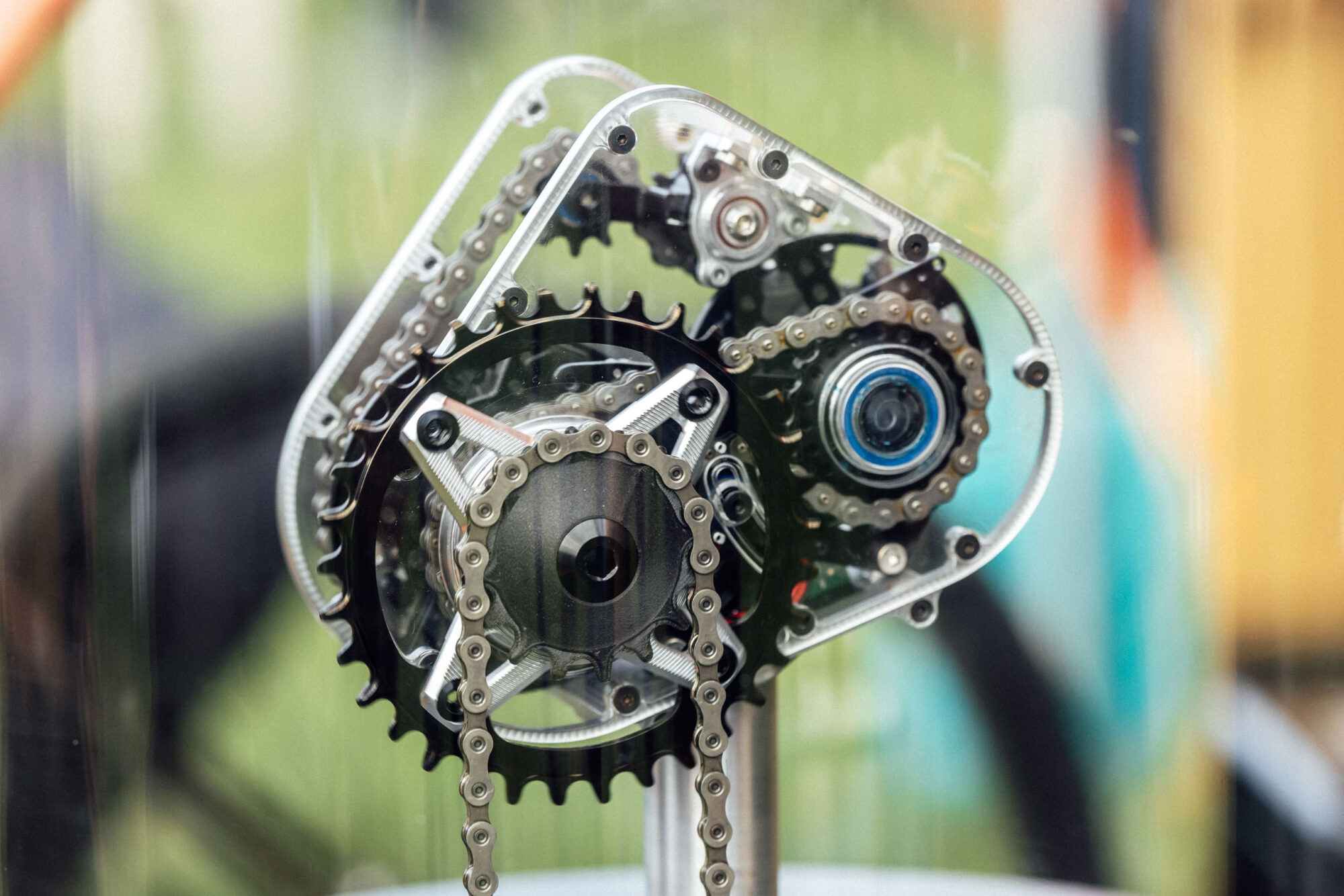
Praxis has always dabbled in cranks and various drivetrain components, but their prototype gear box is by far the most impressive thing I’ve seen from this brand. The prototype they had on display was developed in-house at the company’s R&D lab in Santa Cruz, California. Short for “Hinged Transmission,” the HiT system uses unique hinged gear segments that pivot in and out of the loaded chain to set the desired gearing. This clever mechanism maintains a compact form factor and a consistent internal chain line across all speeds. The HiT can be configured from 4 to 16 speeds, is chain-driven, and features electronic shifting with programmable and automatic modes. Its ability to shift under load and deliver direct, one-touch sweep/dump shifts makes it appealing for a wide range of bikes—from downhill and mountain to pavement and cargo.
It’s unclear when or if HiT will become a reality, but Praxis seems to believe that gearboxes are the future of drivetrain technology. For more on the details of how it works, including a video, head to Praxis’ website. Also, check out Neil’s interview with the engineer in this video.
Fidlock cage
I already covered this at Eurobike last year, but it appears that some minor tweaks were made to Fidlock’s take on the cargo cage before its official release. Plus, it looks pretty nice and is worth a second mention. The TWIST Uni Connector XL merges Fidlock’s trusted TWIST connector with a molded plate to create a strong, adaptable platform for carrying gear on your bike. It mounts to the frame using a standard bike base or can be paired with the Vario base for fork setups. Upon trying it, the TWIST system works incredibly well, is easy to remove, and magnetically “finds” the connection for an easy install. It has a small tab that locks or unlocks the connection, too. Based on trying it in their booth, it seems quite solid once locked down.
The Uni Connector XL has a maximum load capacity of 1.5 kilograms when used with a bike base or up to 2.5 kilograms with the Vario base. It includes three durable straps featuring Restrap’s fast strap system (two measuring 450 x 20mm and one at 300 x 20mm). The connector is both strong and lightweight, weighing just 200 grams. It’s also pretty compact. The base is minimal, and the entire assembly measures 78 x 222 x 47mm.
For bikepackers who often max out their frame, handlebar, and saddle bag system, cargo cages are a great solution to add significant storage space, and the Uni Connector XL looks like a unique option by utilizing Fidlock’s easy-to-use quick-release and install mechanism. The Fidlock TWIST Uni Connector XL sells for €49.99 in Europe, but it doesn’t seem to be findable on the US website.
Shimano Trail Born
Beyond product creation, it’s important for big bike and component brands to understand that, unlike road cycling, mountain biking depends on access to well-maintained trails. That insight has sparked decades of support for trail advocacy and building efforts across the globe by all types of individuals and organizations.
Now, Shimano is deepening its commitment with the launch of the Trail Born Fund. Trail Born is an initiative to build more mountain bike trails globally. It’s a fund, and Shimano awards and releases the funds based on projects that are presented via proposal. They place priority on new hero community trails and old trails that need help, where they might rebuild them and relaunch them back into the community. Right now, Shimano has set aside 10 million dollars for this fund, and we think this a great example to be set for other large bike industry companies to follow.
The bike on display was a collaboration between Shimano, Sycip, and Trail Boss Tools. It was actually built several years ago, but they rebuilt it with new tools and details for this show. The Sycip e-cargo bike features all kinds of lovely details, including the integrated rack and a unique frame design. This would, hands down, be my personal dream e-cargo bike.
Odyssey Optis
Founded in 1985 in Southern California, Odyssey BMX has been a cornerstone of the BMX scene for four decades. Known for a few reputation-building components like the Gyro detangler and the original Hazard Lite rim, Odyssey pushed the boundaries of BMX products and remains a trusted name for BMXers around the world. Now, they’ve stepped into another chapter with the launch of a mountain bike-centric product that’s as unique as it is interesting. Who’d have thought that an inner tube-like thing would generate such a stir? I heard rumblings about it, and as it turns out, our friend Taj Majelich was helping Odyssey with the launch.

In summary, the Odyssey OPTIS (Odyssey Pneumatic Tire Insert System) is a lightweight, fully tunable tubeless tire insert designed to enhance performance across the board in mountain bikes, gravel bikes, and anything in between. Developed with an understanding that tire/insert assemblies greatly affect grip, suspension, and cornering support, OPTIS addresses issues typically associated with tire pressure. By inflating the insert to a higher pressure than the tire, OPTIS supports the tire sidewalls similarly to a foam insert by enabling lower operating pressures for improved traction while preventing burping and offering protection against rim and tire damage. Its bead-locking design also allows for a brief run-flat capability in case of a puncture. Perhaps the most interesting thing about the OPTIS is the valve. It has a bi-valve that allows you to slide the sleeve and change the airflow to inflate either the insert or the tire.
OPTIS is available in 27.5″ or 29″ models with standard or (soon-to-come) longer valves for tall carbon rims. OPTIS is also impressively lightweight, offering weight savings over most traditional inserts and theoretically enabling the use of lighter tires and rims. You can dig into more about it here, including a video. OPTIS sells for $40 for the insert and $90 for a valve/insert combo.
2025 Sea Otter Classic coverage supported by

Further Reading
Make sure to dig into these related articles for more info…
Please keep the conversation civil, constructive, and inclusive, or your comment will be removed.








